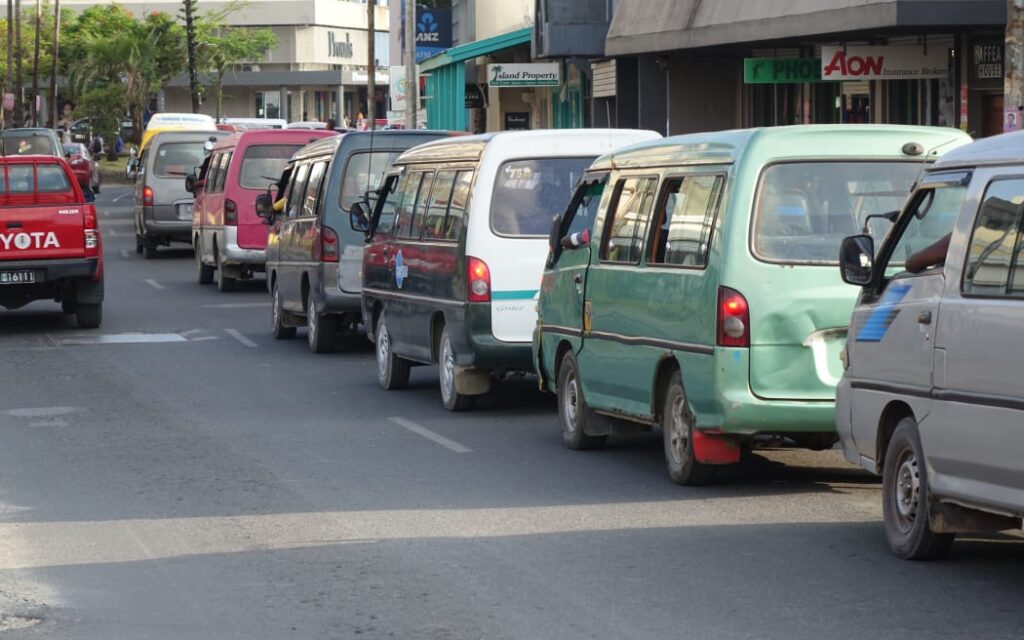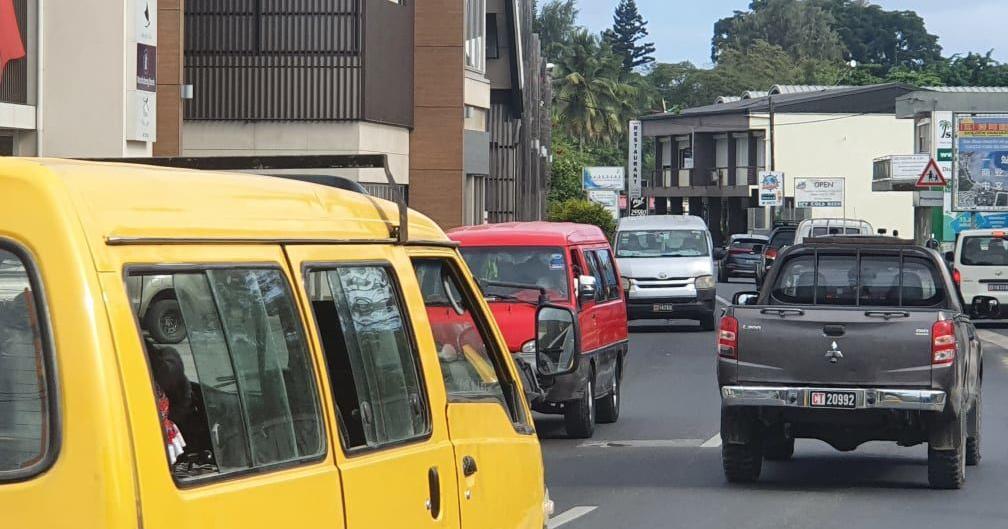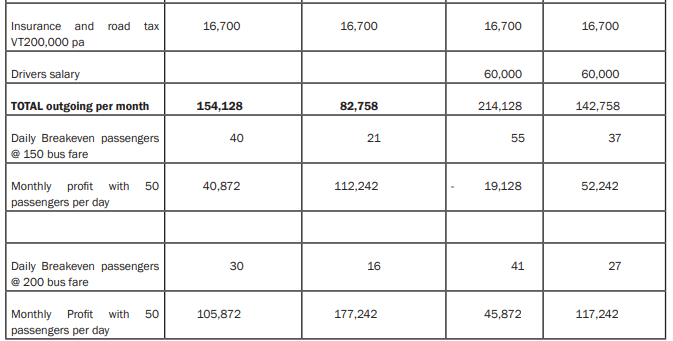The Public Transport Debate
November 15, 2022 12:18 am | Posted in Opinions | Share now TwitterFacebook

Is an increase in the bus fare from 150 vatu to 200 vatu needed?
There has been considerable discussion for the last few months on the proposal for an increase in bus fares. On November 8, during a public awareness meeting on Public Land Transport Fare Levying and Fare Structure Awareness for Efate at the Chiefs Nakamal, the Chief Executive Officer (CEO) of the Public Land Transport Authority (PLTA), Reginald Tabi, confirmed that bus fares would increase by 50 vatu before the
end of the 2022. The justification for the proposed increase was based on increases in the cost of vehicle parts, increases in the fuel price, and high loan repayments.
The public bus system in Vanuatu is controlled by the Public Land Transport Authority (PLTA). The PLTA issues licenses to bus operators and regulates the transport industry. In Vanuatu, buses do not follow any strict routes. The system is that for 150 vatu, the bus will drop you off at your final destination and not at a designated bus stop. This also means that the route taken from pickup to drop off can be a long one depending upon the other passengers that may have gotten on to the bus before you. The official rates for bus fares also vary in accordance with the distance travelled. As an example, travelling from town to Eratap is expected to pay VT200 when the new fare comes into effect. For those travelling to the Teouma area, they will be paying VT250, an extra VT50 added to the current rate. Once the rate has been set, it is illegal for bus operators to charge anything other than the set rate. This means that bus operators will also not be able to lower their rates to attract more users.
The official number of licenses issued to bus operators is capped at 1,200. Currently, there are 1,143 officially licensed buses operating. In the past, the number was much higher.
The large number of licensed bus operators has always been a problem in the past.
In May 2018, the then Minister for Internal Affairs, Andrew Napuat issued a directive to the PVLTA to stop issuing permits effective from the 1st Jun 2018. According to statistics provided at the time by Minister Napuat, Efate and Port Vila had a total of 1,400 service buses, 261 Common Transports and 76 taxis in total.
He labelled the very high number of public transport operators, particularly the service buses as “excessive” and stressed that given the high number of buses, bus owners and drivers were struggling to make a profit. As a consequence of this, there was considerable lobbying from the transport industry for bus fares to be increased.
The history of Bus Fares
Quite a few years ago, the bus fare was 100 vatu. Around 2014, the rate was increased to 150 vatu. This was a 50% increase from the 100 vatu fare that had been around for many years. The increase from VT150 to VT200 will be a 33.3% increase in the fares.
Fluctuating Fuel Prices
One of the main reasons used by Bus Operators in support of the increase in bus fares has been the increased cost of fuel. The prices of fuel at the pump have fluctuated over the last few years with the main influence on local fuel prices being the global prices of Oil.
On March 1, 2015 fuel prices in Vanuatu dropped Vt15 per liter for diesel (mazut) and Vt 5 per liter on unleaded petrol (benzine). This brought down the prices to Vt146 for regular diesel; Vt149 for low sulfur diesel and Vt158 for unleaded petrol. This was the second decrease in fuel prices that year. On January 30 they had already dropped Vt13 across the board.
There were further falls in the price of fuel in 2016. In February 2016, due to continued falls in the world price of Oil, Pacific Petroleum General Manager, Nicola Leflon confirmed the reduction in the price of unleaded petrol (benzine) from Vt143 per liter to Vt133 per liter and Vt131 per liter diesel (mazut) to
Vt121.
From 2016 to 2021, the price of fuel remained stable at around VT140 per liter. However from April, prices began to rise. The wholesale price of mazut increased to VT129/L and pump prices at VT141 per liter on April last year. In March 2022 there was a further increase when the Diesel price increased from VT160 per liter to VT183 per liter. There was a further increase in May when the price increased from VT183 per liter to VT217.12 per liter, an increase of VT34.12 per liter in two months. Further increases saw prices at the pump in excess of VT250/liter.
Following worldwide trends, the price of diesel fuel subsequently began fall and in October 2022 the price of diesel decreased by VT27/L. The Department of Energy (DoE) said that this would see the price drop to VT226 /L. Despite the falls in prices, current fuel costs have continued to have a negative effect on the running costs of buses.

The Bus Owners and Operators
The main operating costs of owning a Public Bus are the following
- Wages for the Driver
- Fuel
- Maintenance and repairs
- Annual Comprehensive Motor
Vehicle Insurance - Annual Road Tax
- Loan Repayments to bank or Finance
company.
There are many factors that will affect
the operating costs of public transport
so the costs will vary considerably on
a case by case basis. Some of these
factors are as follows. - Is the owner of the Bus also the
driver? - What routes does the Bus normally
take? - How new is the Bus and how was it
purchased? - What is the fuel economy of the
vehicle?
A Case Study on the costs of owning and operating a service Bus
The VBR has based its case study on a hypothetical example of a new Service bus that has just been been
purchased. It cost 4m vatu and the new owner is considering to drive it himself to save on costs. The bus can be financed by a loan from a bank over a 5 year period at 15% or purchased outright. To qualify for the loan, the owner has to contribute VT1m to the purchase price and borrow the balance. He has decided that he will not provide a door to door service but will drive a fixed route through heavily populated areas to downtown Port Vila and back again. The round trip is 12 km and will take 45 minutes to an hour to complete. The owner intends to use the same route 5 times a day for 6 days per week and rest on Sundays. There is the option if whether the owner will drive the bus or to employ a driver with the monthly salary of a driver at VT60,000. The new bus has fuel consumption of 14 liters per 100km and annual service and maintenance costs are 5% of the value of the vehicle. The service and maintenance
costs are to cover general service and parts replacement. Current cost of fuel is Vt226 per liter
The following table is an economic analysis of a hypothetical case on the costs to own and operate public transport bus. There are 4 scenarios with the main 2 variables of whether there is a loan to purchase and whether the owner will employ a driver.


The above is a hypothetical case study based upon a number of different variables but clearly shows that the big factor which affects the financial viability of Public Transport Ownership is the pressure of bank loan repayments. The second important factor is the cost to employ a driver. The cost of fuel and whether fixed routes could be used whilst important are not as large a factor in determining the financial viability of owning a public transport bus. The best option to pursue would be to avoid any borrowing and for the owner to drive the bus himself. Under this scenario, the number of passenger needed per day to cover cost is only 16 per day. The monthly profit with 50 passengers per day (10 passengers per round trip) on a 150 bus fare is in excess of VT100,000. However, with loan repayments and an employed driver, there is an operating loss. Under the right circumstances, and managed properly, it is possible for owners to earn a profit. However, those who are considering investing in a service bus needs to structure their operation in order to minimize the risks of having too high outgoings.
The case for a fare rise
Many bus operators have been lobbying for an increase in bus fares and there is some justification for this due to the increasing costs of owning a Public Bus and lower passenger numbers. Fuel prices have increased and so have the costs of car parts. With the imminent increase in minimum hourly wage, there is also the added pressure of higher wages for drivers.
Despite the number of permits issued by the PLTA to bus operators capped at 1,200, it is clear that there are too many buses currently on the road. The large number of buses means that there are fewer passengers being carried by the buses and fewer passengers means less income being shared. The PLTA has made it a law that the set bus fare must be followed despite the large differences in the state of repair amongst service buses. Also, there is a problem with many unlicensed bus operators competing for the same passenger market.
A fare rise will immediate provide relief to all Public Transport Operators but it will also affect those workers who are using public transport to go to work each day. The cost of bus fares is currently between 15-18% of the minimum wage, and will also have an immediate effect on the use of public transport with many passengers electing to walk instead of taking a bus. An increase to 200 vatu will add more pressure on family budgets that have already been struggling during COVID. Business houses who give bus fare allowances to staff may decide to provide direct transport to their staff.
What options are available to the PLTA?
In addition to the fare increase, the PLTA needs to take in to consideration the following if it is looking to restructure the current system of public transport
- Enforcement of vehicle standards
- Allow fares to be varied within set
limits and let market forces influence
demand - Consider fixed public transport routes
to minimize kilometers driven - A review of the capped number of
licenses issued
The PLTA has confirmed that the increase to 200 vatu will happen before the end of 2022. The increase will be welcomed by owners of public transport buses, but to balance this decision, which will directly affect the travelling public, it needs to introduce some reform to the system that is currently in place to provide a better and more reliable transport service to the public.










